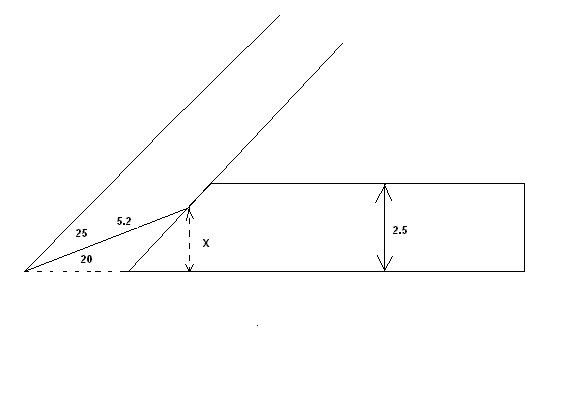Thanks to everyone who replied to my question about Bailey-type plane iron thicknesses. Seems they have varied a bit, but there's not much correlation between thickness and year of manufacture - between about 1.85mm and 2.4mm seems to be the range. For what it's worth, I measured my Cliffie iron, and it's a very consistent 2.94mm across the blade about 1/2" behind the cutting edge, so call it 3mm. Given that blade stiffness is proportional to the cube of blade thickness, that's a significant improvement, and experience from a number of people would seem to bear that out.
As to material, I've been doing a bit of rootling about in my old engineering textbooks, and thinking about the markings that Vann reported on his older irons - 'Crucible Cast Tungsten Steel', 'Tungsten Steel' and 'Tungsten Vanadium Steel'. The analysis of modern O1 steel is Carbon 0.85-1.00%, Silicon 0.40% max, Manganese 1.10-1.35%, Chromium 0.40-0.60%, Tungsten 0.40-0.60%, Vanadium 0.25% max, the balance Iron. An older reference gives about the same analysis without the Vanadium. It therefore seems entirely possible that (post-war) Stanley and Record irons are BS 4659 BO1 steel (that's what we generally call O1), the reference stamped on the blade may be just a bit of marketing 'polish', like a car manufacturer putting alloy wheels and go-faster stripes on a bog-standard hatchback. The pre-war situation is more confused, because British Standards didn't (generally)cover steel grades then.
Metallurgically, the addition of tungsten causes the formation of Tungsten Carbides with some of the carbon in solution, so improves hardness. Vanadium has a similar effect, and both slow grain growth during the hardening process, so should promote a finer-grained steel than a pure carbon steel. I'm speculating now - it may be debatable how pronounced this effect is, and how much it is negated by the tempering process to remove brittleness. I'm not sure that O1 (or 'Ground Flat Stock' as it's often sold) gives noticably higher hardnesses in practice than, say, Silver Steel, or the old plain carbon 'Cast Crucible Steel'.
(For anybody daft enough to want to research this further, instead of getting some wood shavings made, the main reference I used is 'Engineering Metallurgy' by Higgins, Volume 1, fifth edition, 1983.)
So the conclusion is the old and newer Bailey irons are basically O1 steel, or something very close to it. Thickness varies, but they are thinner, and therefore significantly less stiff, than modern Clifton/Isles/Hock irons. As others have pointed out above, stiffness can be improved by using a close-fit cap iron, and other measures like ensuring a firm, rock-free bedding against the frog will help too.





